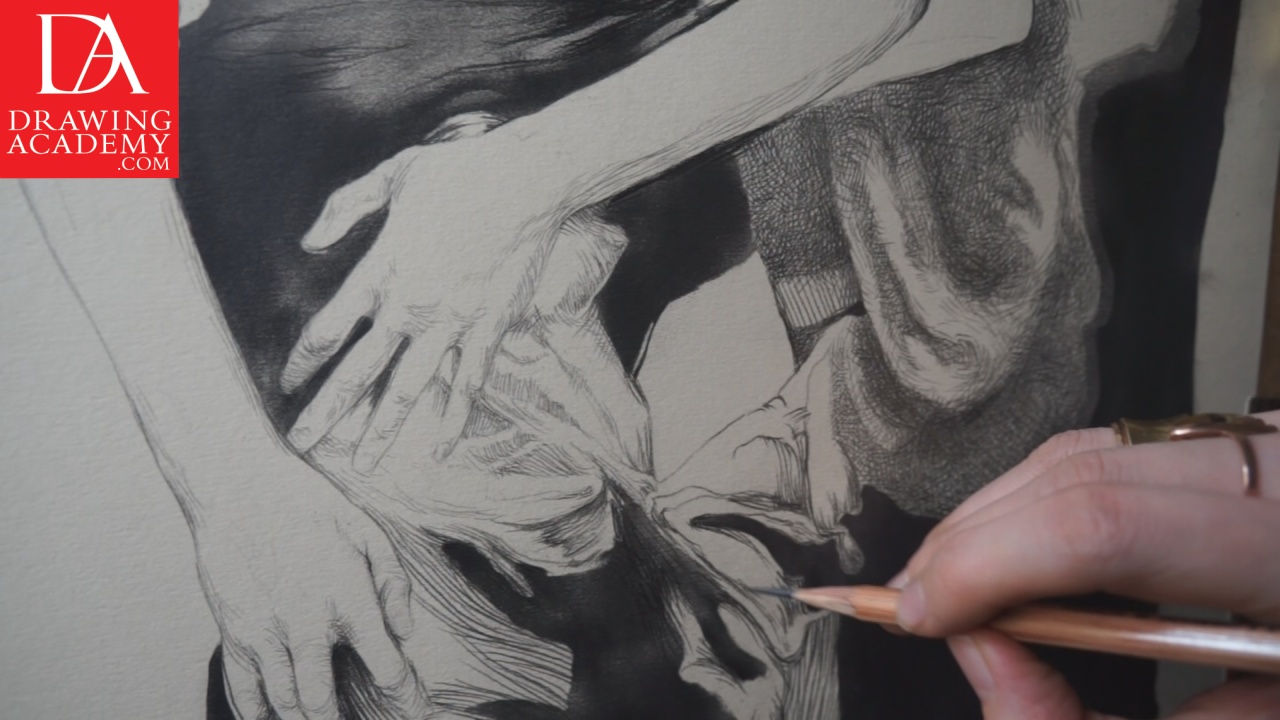How to Use Golden Proportion Rules in Drawing
In this video lesson, you will discover how to use the golden proportion rules in drawing.
Enroll in the Drawing Academy Course
Pay once - Enjoy forever!
Only $297
Golden Proportion
Every proficient fine artist must know and use the golden proportion in ones art. The golden proportion is also known as the Golden Ratio, Golden Mean, Golden Section and Divine Proportion. It is represented by the following number, called Phi, which is equal to 1.61803399…
Where this number derives from and what it represents? When you compare two values, like dimensions of objects in your drawing for example, these two objects will be in the golden proportion if their ratio is the same as the ratio of their sum to their maximum.

A proficient fine artist is trained to recognise and use the golden proportion in drawing intuitively. If elements and objects in the drawing look good and well balanced, there is a high chance that those objects and elements are in the golden proportion.
In the Drawing Academy video course, I have presented several video lessons on the divine proportion topic. You may refer to those videos to find out what the golden ratio is, how it can be calculated and measured.
In this lesson, I will give you more information on how to use the golden proportion in drawing.
How the Old Masters Used the Golden Proportion
Every masterpiece by the Old Masters contains numerous golden proportion ratios. If you analyze such artwork carefully, you will find that certain objects, figures, lines and masses follow the divine ratio rules. How did it happen? Did the Old Masters calculate their compositions rather than create free-hand drawings?
I don’t think they did a lot of calculations. Their genius talent helped to create beautiful drawings, paintings and sculptures in ratios that coincide with the golden proportion. It is not accidental that golden proportion can be found in beautiful compositions by the Old Masters. Humans perceive objects to be beautiful when those objects are proportioned according to the golden proportion rules.
The Golden Proportion History
For the last 2,400 years, starting from ancient Greek mathematicians Pythagoras and Euclid, through the medieval and the Renaissance time thinkers, Leonardo of Pisa, Luca Pacioli, Leonardo da Vichi, Michael Maestlin, Johannes Kepler, and many other mathematicians, artists, architects and scientists, the Golden Proportion still fascinates minds of people.
Golden Proportion – Human Body Aesthetics
The golden proportion is much more that just a ratio, it can be found multiple times in the human face and body. That’s how we perceive those faces that follow the golden proportion rules to be more attractive.
Leonardo da Vinci and Albrecht Durer did extensive studies on human body proportions, as well as many other fine artists of the past and present days.
Golden Proportion in Drawing
When it comes to using the Golden Proportion in drawing, an artwork greatly benefits when the divine ratio is applied to various aspects of the drawing, such as:
– The ratio of two sides of the drawing area or drawing support;
– Ratios in linear sizes of various objects in the drawing;
– Ratios of tonal values in the drawing;
– Ratios of various angles in the composition;
– Ratios of various masses in the drawing.
Of course, when you draw a composition, there’s no need to use a calculator and a ruler to construct elements of your drawing in precise golden proportion ratio. You are a fine artist, not a mathematician after all. Try to judge proportions by eye, it will improve your drawing and compositional skills. Otherwise, you might decide to use a Golden Mean Gauge, which is presented in this video lesson.




